Forget long incisions and lengthy recoveries. Interventional radiology offers minimally invasive treatments for a wide range of conditions. But what exactly is it?
Interventional radiology (IR) uses image guidance, such as X-rays, CT scans, and ultrasound, to perform minimally invasive procedures through small incisions or punctures. IR offers targeted treatments with reduced pain, shorter recovery times, and lower risks compared to traditional surgery.
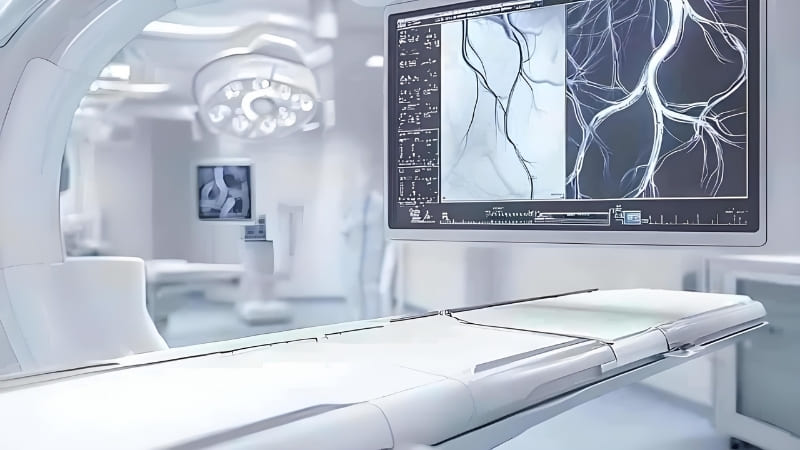
What is Interventional Radiology Used For? A Wide Range of Treatments
I used to think radiology was just about taking pictures. Then I learned about IR – treating tumors, clearing blocked arteries, all without major surgery!
Interventional radiology is used to diagnose and treat a variety of conditions, including vascular diseases, cancer, pain management, and women’s health issues. IR offers targeted treatments with minimal impact on the patient’s body.
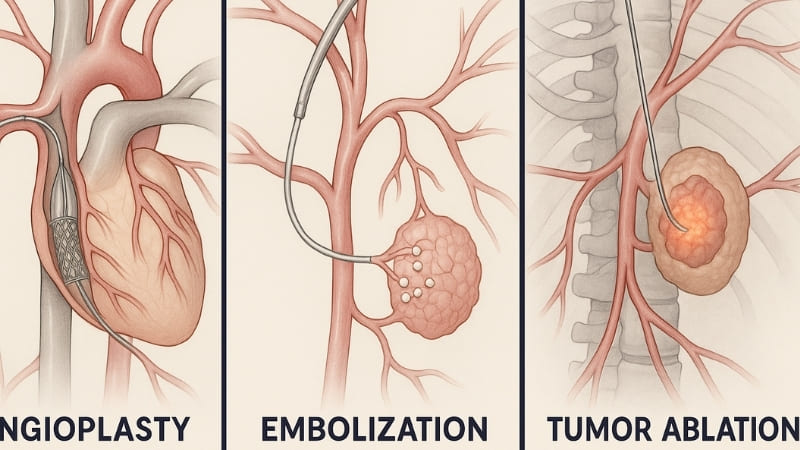
IR can be used for:
- Vascular Diseases1: Angioplasty and stenting to open blocked arteries, thrombolysis to dissolve blood clots, and embolization to stop bleeding.
- Cancer Treatment2: Tumor ablation (using heat or cold to destroy tumors), chemoembolization (delivering chemotherapy directly to tumors), and placement of ports for chemotherapy administration.
- Pain Management3: Nerve blocks and epidural injections to relieve chronic pain.
- Women’s Health: Uterine fibroid embolization (UFE) to treat fibroids, and fallopian tube recanalization to treat infertility.
What is the Most Common Procedure in Interventional Radiology?
I was surprised to learn that one IR procedure is performed millions of times each year. It’s not glamorous, but it’s life-saving.
The most common procedure in interventional radiology is angioplasty and stenting to open blocked arteries in the heart and legs. This procedure restores blood flow, relieves pain, and prevents heart attacks and strokes.
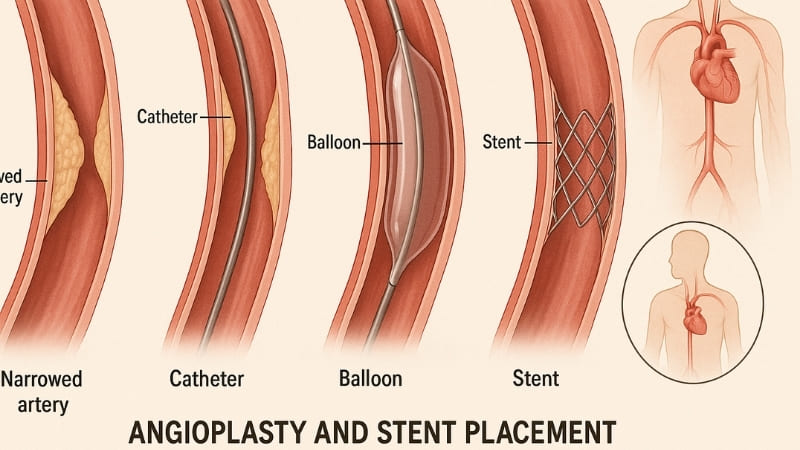
Here’s what I’ve learned about angioplasty and stenting1:
- Procedure: A catheter with a balloon tip is inserted into the blocked artery. The balloon is inflated to widen the artery, and a stent is placed to keep it open.
- Benefits: Angioplasty and stenting can relieve chest pain2 (angina), improve blood flow to the legs3, and prevent heart attacks and strokes.
- Recovery: Patients typically recover quickly after angioplasty and stenting1, and can often return to their normal activities within a few days.
What is the Difference Between a Radiologist and an Interventional Radiologist?
I used to think all radiologists did the same thing. Then I realized some were actually performing surgeries through tiny incisions.
A radiologist interprets medical images (X-rays, CT scans, MRIs) to diagnose diseases. An interventional radiologist is a radiologist who has specialized training in performing minimally invasive procedures using image guidance to treat diseases.

So, what’s the difference between them?
- Training: Both radiologists and interventional radiologists1 complete medical school and a residency in radiology. Interventional radiologists then complete an additional fellowship in interventional radiology.
- Focus: Radiologists focus on diagnosing diseases2 by interpreting medical images. Interventional radiologists focus on treating diseases using minimally invasive procedures3.
- Procedures: Radiologists primarily review images. Interventional radiologists perform procedures like angioplasty, embolization, and tumor ablation.
How Long Does an Interventional Radiology Procedure Take?
I’ve been amazed at how quickly some IR procedures can be completed. It’s a far cry from traditional surgery.
The duration of an interventional radiology procedure varies depending on the complexity of the procedure and the patient’s condition. Some procedures can be completed in as little as 30 minutes, while others may take several hours.
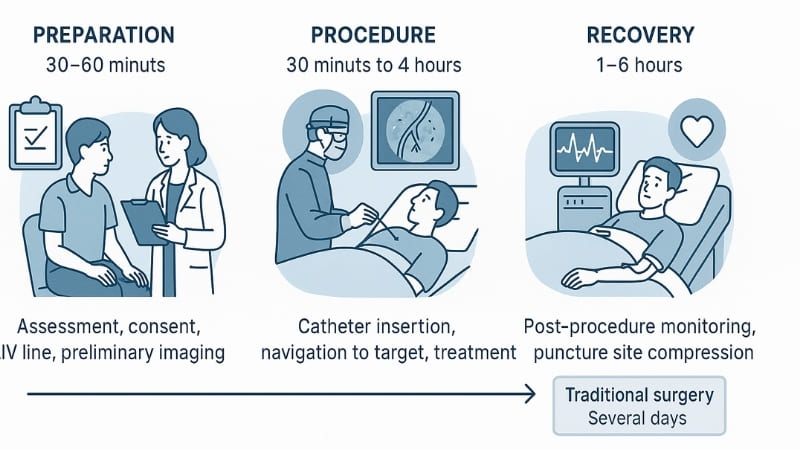
Here’s what I’ve learned about procedure times:
- Simple Procedures1: Simple procedures like placing a central line or performing a nerve block can be completed in 30-60 minutes.
- Complex Procedures2: Complex procedures like tumor ablation or uterine fibroid embolization can take 2-4 hours.
- Factors Affecting Time3: Factors that can affect the duration of an IR procedure include the patient’s anatomy, the complexity of the condition being treated, and the experience of the interventional radiologist.
Is Interventional Radiology Considered Surgery?
I’ve heard people debate whether IR is "real" surgery. It’s minimally invasive, but it still involves complex medical interventions.
Interventional radiology is considered a minimally invasive alternative to traditional surgery. While it involves incisions or punctures, it does not require the large incisions and extensive tissue manipulation of traditional surgery.
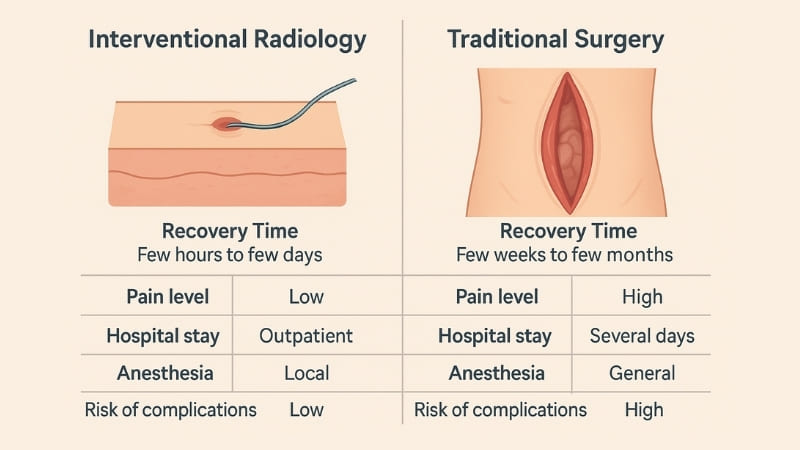
- Invasiveness1: IR procedures are performed through small incisions or punctures, while traditional surgery involves large incisions.
- Recovery2: Recovery2 from IR procedures is typically faster and less painful than recovery from traditional surgery.
- Risks3: IR procedures generally have lower risks of complications than traditional surgery.
Conclusion
Interventional radiology is transforming medicine by providing minimally invasive treatments for a wide range of conditions. With its targeted approach, reduced pain, and shorter recovery times, IR is changing how we approach healthcare.
- Understanding the invasiveness of procedures can help patients make informed choices about their treatment options. ↩ ↩ ↩ ↩ ↩ ↩
- Exploring recovery times can provide insights into the benefits of choosing interventional radiology over traditional methods. ↩ ↩ ↩ ↩ ↩ ↩
- Knowing the risks involved can empower patients to discuss their options with healthcare providers more effectively. ↩ ↩ ↩ ↩ ↩


